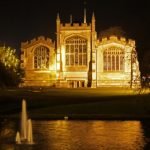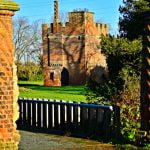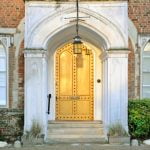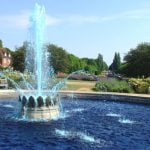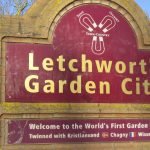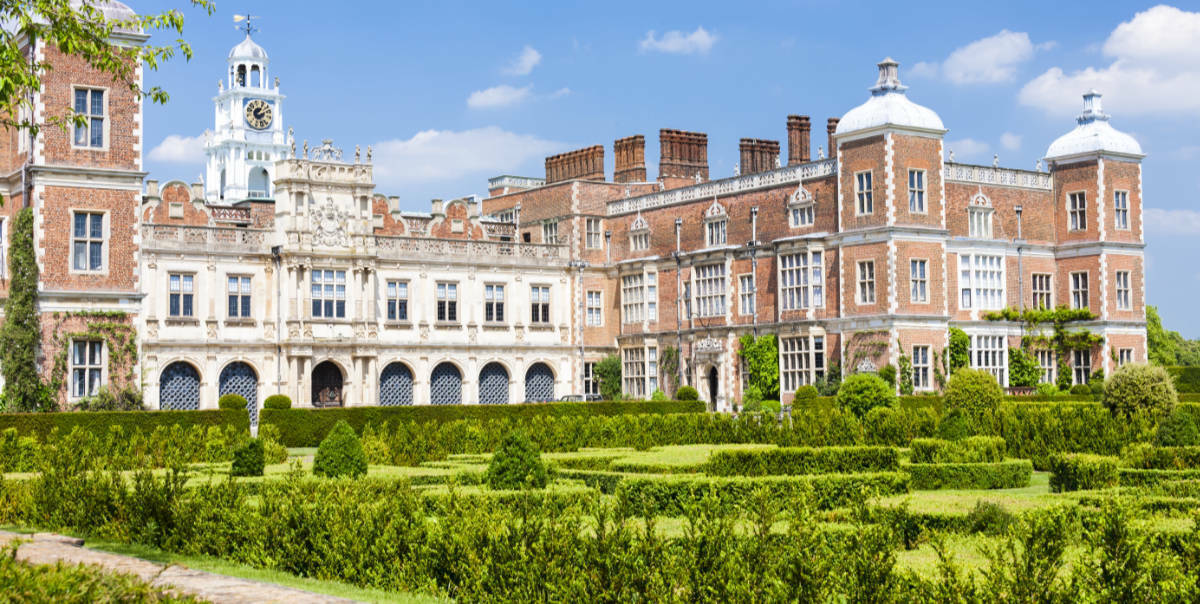
Home to over 40,000 British citizens, Hatfield, in Hertfordshire, is known for quaint old buildings combined with modern architecture. It’s a green town, where shrubbery grows on every corner. It’s the original home town of the Marquess of Salisbury, so we already know that it’s a dazzling jewel in the Hertfordshire crown. Let’s look closer at this lovely little countryside New Town and find out if it’s the kind of place you want to staycation in or not.
We’ll head back in time first. We like to know what history shaped the lands we live in.
The Early Days of Hatfield
Before the Romans invaded Britain in the early ADs, the lands of what is now England were tribally owned. The territory beneath Hatfield was on the border between the Catuvellauni and the Trinovantes tribes. You can view the map here, though obviously, the borders were not so clear cut. The Catuvellauni were the most powerful Belgic tribe in Britain. They were an inland tribe, though their lands stretched all the way to the Thames in the south. The Romans defeated the Catuvellauni in 54BC. Indeed, we only know that’s what they called themselves from Roman written records.
The Trinovantes tribe scattered in the 50BCs at the hands of the Catuvellauni. The king of the opposing tribe was aggressive and the two tribes regularly fought. The Trinovantes occupied Essex and a smaller area of the country. Their prince Mandubracius ended up in exile thanks to King Cassivellaunus. Later, the Romans would either kill the tribes or take them as native partners and settle here. However it happened, the Romans subdued the population and settled in England.
Hatfield grew up on the Great North Road, which later became the M1. It was the road the Romans built to head north. It runs straight up the country to Scotland. The town’s name means heath-covered open lands. St Albans in the west and Welwyn in the north both played host to the Romans.
There are Roman Baths to the north, a 2nd-century building in Old Hatfield, and even older remains in the area. Historians discovered Iron Age and Roman farming practices on the grounds of a local school. Archaeologists found evidence of detritus from a Roman villa in the area, though the villa is as yet undiscovered. If you own a metal detector and a field or two, it’s a good place to start looking.
Pottery shards from the 5th to the 7th centuries in Hatfield show us it was occupied before records officially began. There’s an 8th-century church document that references an English church at Hatfield in 679. Later, King Edgar of England would grant 40 hides of land at Hatfield to the Monastery of Ely. The monastery was already 200 years old at the time. The Vikings destroyed it in 870 but it quickly regrew. Ely Monastery later turned into Ely Abbey, which later turned into Ely Cathedral circa 1109[i].
Let’s look at the Hatfield entry in the Open Domesday book resource before we move on to the Medieval period. In 1086, King William the Conqueror, the Norman King of England, took a census of all the lands he owned. Hatfield is recorded as being 55 households strong. There were 6 slaves in Hatfield, probably resident at Hatfield House or the Abbey. There were 18 villagers, 18 smallholders, 12 cottagers and one priest. It was a rich land.
The land of Hatfield belonged to the church and King William didn’t interfere with that. He let them keep the land, worth a regal sum of £25 a year. The land contained:
- 30 ploughable lands
- 20 men’s plough teams with 2 Lord’s teams.
- 20 parcels of land
- Meadows with 10 ploughs
- Woodland big enough for 2000 wild pigs
- 4 mills
- And we know there was a church, too.
Hatfield was a wealthy area, even all the way back in 1086.
Hatfield in Medieval Times
The manor at Hatfield exchanged hands in 1108. The Bishops of Ely took over from the manor. The Bishops started running weekly markets in the town. The king, then Henry III, allowed a charter for this plus a 4 day fair on an annual basis. The town grew as a centre for local treading. St Etheldreda’s Church saw its first stones laid in 1285. The church was the project of the Ely monks. Monks were good for early towns. Many monasteries took in the sick, built piped water supplies, and even helped locals feed themselves.
In the late 1300s, architect William Wintringham used Hatfield oak wood to build parts of Hertford Castle.
John Morton, one of the Bishops of Ely, constructed the Old Palace in 1490. It took a decade to build. This building stood nearby the present Hatfield House. Queen Elizabeth I and Mary I both spent childhood years in the Old Palace. Hatfield remained a rich area all throughout the Middle Ages. A few days into her rule, Elizabeth I stayed at the Old Palace and held her first council in the great hall.
Hatfield House as we now know it, didn’t come about until 1607. The 17th-century house, constructed by the 1st Earl of Salisbury, replaced the Old Palace completely. He had lived in the palace as a child and wanted to preserve his love for the countryside.
We must pause momentarily in our retelling of Hatfield history to tell you about some of the fun facts we found out when we started researching. We’ll get back to industrial history in a moment.
A Bit Of Hatfield Trivia
When we review local towns here at Five Minutes Spare, we like to dig up as much gossip as we can find. Here are some of the most interesting facts we could dig up about Hatfield to help entertain you:
- Hatfield is famously home to a British Aerospace site. Though now closed, the site provided major employment to the town through the factory where workers built and designed aircraft.
- Hatfield House made the town famous as the home to the first Marquess of Salisbury. It has hosted several members of royalty ever since. The elegant stately manor house built on the grounds of the Old Palace, which hosted Queens Mary I and Elizabeth I in their younger years.
- The average house price in the area tops £400k, meaning that Hatfield has been a rich area since the 10th
- Hatfield is not to be confused with Hatfield in America. In the US, it is both a place name and the name of the ‘Hatfield Devil.’ The Devil Anse Hatfield got his name from being a sharpshooter who could rival the devil himself. Not in English Hatfield though. It’s far too nice for guns.
- Hatfield received New Town designation for overspill from London but it didn’t swell the same way as those early New Towns did. Its population of around 40,000 people keeps it garden-city sized, instead of industrial and overly modernist.
With all that in mind, let’s move on. We want to know how fast Hatfield in Hertfordshire grew during the 19th century when the industry kicked off.
Hatfield during the Industrial Period
At the start of the industrial revolution, Hatfield had a population of 2,442. This seems small, but back then it was a fairly large town. In 1835 a fire almost destroyed Hatfield House. Lady Mary Emily, the Dowager Marchioness of Salisbury, burned to death. The fire started when feathers on her hat set alight. It destroyed the entire west wing. Only a few of her bones remained. She was a prominent tory and the first English woman to become a Master of the Hunt in foxhunting.
Hatfield House was soon open again and Queen Victoria visited in 1846. Forty years later the town formed their own football club. This was about a year after the Football Association properly formed and football became popular throughout the land.
By 1901 the population of Hatfield was 4,754 people. So it didn’t grow all that much during the Industrial period by comparison to other towns. It did double in population, so it didn’t do that badly.
Modern Hatfield
During the last hundred and twenty years or so, Hatfield grew its own aerodrome. The land belonged to Geoffrey de Havilland, who built a clubhouse and other buildings. He later added an aircraft factory that employed hundreds of local residents. It closed in 1992. Hatfield became a New Town in 1946 with the first wave, though it didn’t suffer as much as some other larger New Towns. The population went from 5k to 13k overnight though, lots of work had to be done to accommodate all those people.
Hatfield Aerodrome played a significant role in the production of aircraft used to fight in WWII. 55% of all Mosquito planes built in Britain came out of Hatfield. 5,599 aircraft total passed through the factory here. It was an important hub of the home front, where we built the machines needed to fight the London Blitz. St Luke’s Church, opened in 1877 as a funeral chapel, houses 22 WWI and WWII servicemen. A German bombing raid in 1940 killed 6 civilians, also at rest in the church graveyard. The church is likewise home to the roll of honour and a memorial plaque that remembers the names of the fallen from WWI.
In 1953 the town twinned with Zierikzee in The Netherlands. The Aircraft Factory changed hands a few times in the 60s, eventually becoming the British Aerospace centre in the 70s.
In the year 2000, the Hatfield rail crash occurred in October. 4 people died when a train derailed outside the station. The train was going over 100mph. It injured over 70 people but authorities claimed more could have died at such high speeds. The derailment happened due to metal fatigue. The incident exposed Railtrack for not taking proper care of the lines. Balfour Beaty, the contractor, broke health, and safety laws alongside Railtrack.
The census in 2001 showed 27,883 residents of Hatfield. That’s a long way from the 55 households in the Domesday book. The University of Hertfordshire came to town back in 2003, opening the £120 million de Haviland Campus in September.
Modern Hatfield is a lovely place to raise your children. Yes, it’s a New Town, but no, it doesn’t come with that overpopulated, modernist culture that some of the New Towns inherited after the war. Hatfield still retains the history that shaped it, tragic fires, monasteries, railway accidents and all. It’s a surprisingly leafy commuter town that is growing in affluence as a haven for London residents. It makes a pretty good place to mix countryside with city living.
Let’s finish the history and move on to the famous people you might meet here when you come to visit.
Famous People from Hatfield
Now that we know all about how Hatfield came to be, let’s discuss the famous people you could meet there. Here are some of the famous people you might meet down Sainsbury’s if you live in or visit Hatfield:
- Colin Blunstone from the Zombies lived here
- Babe Ruth the band formed here
- Sandra Conley came from Hatfield; she was once a principal dancer for the Royal Ballet.
- Mick Taylor, one of the Rolling Stones’ guitarists, was born here.
- Some footballers, including Samir Carruthers, Iain Dowie, Rodney Marsh and Korey Smith.
- Billy Joe Saunders, the WBO world champion boxer.
- Sanjeev Baskar lived here while he was at University. Guy Ritchie, a famous director who was married Madonna for a while, was a Hatfield man.
- Barbara Cartland, the romance queen and lover of all things pink, was a Hatfield woman.
So Hatfield has had a disproportionate number of famous faces by comparison to other towns of its size. Could it be something to do with the rich countryside attracting like-minded people? Perhaps. It could also just be luck.
Let’s get stuck into the best things to see and do in Hatfield in Hertfordshire if you get stuck here.
The Best Attractions in Hatfield
This is the section where we review the best things to see and do in town, according to local tour guides. Here’s what our team had to say about Hatfield.
Historic Sites and Landmarks
Hatfield House is both a local landmark and a historic site. built on the grounds of the Old Palace that housed royalty, this is the home of the Marquesses of Salisbury. They run tour groups throughout the year, given by knowledgeable guides. There are extensive well-kept gardens and grounds to explore. It has a tearoom and you can wander the stately home when it’s open, too. It is a Jacobean stately home with an on-site shop.
There’s a disused railway station in Hatfield known as Nast Hyde Halt. Legend holds that it opened in 1910 to serve local residents. Now it is an overgrown platform near Alban way, which locals lovingly restored in 2015. Although the tracks vanished in 1969, and although no trains run through here anymore, locals tidied it up and reclaimed the area. They laid a short panel track from there to the former level crossing. The restoration is a labour of love for local charity workers led by a man named Mike Izzard. It was Mike that drove locals to renovate the area back in 2015.
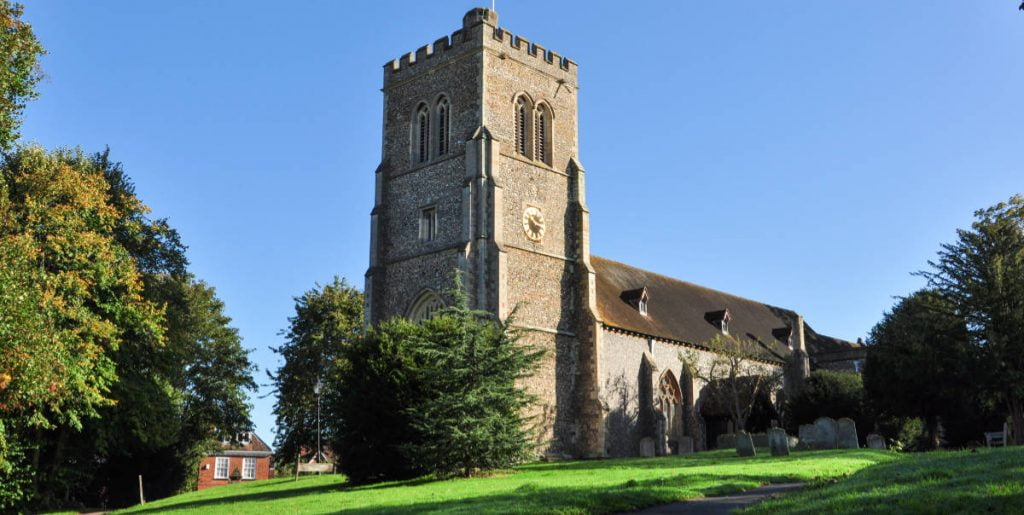
Image: Peter Moulton/Shutterstock.com
Finally, if you are looking for something a little unusual then visit Old Hatfield or Bishops Hatfield as it is also referred to. Why well as well as being a quaint village located within the town itself it also boasts St Etheldreda’s Church. This dates back to the 1200s and has a number of memorials that are really worth seeing. Most interestingly though it has a carillon ( a large bell based percussion instrument) which apparently plays a different tune every day of the week!
Outdoor Attractions
The River Lea runs past the suburbs of Hatfield. The best places to enjoy it are at the many walks along the riverbank. You will find parks aplenty and nice areas where you can sit and watch the river. There are playing fields adjacent to the river, where many people come to walk their dogs or enjoy a stroll.
You can head outside of town if you are willing to travel a little. Stanborough Park lies in the surrounding countryside and offers the opportunity for water sports in a sprawling country park. Technically situated on the outskirts of Welwyn Garden City, this park is great for getting back to nature. There are two lakes here, spanning several acres of enjoyable green belt land. Go hiking, cycling, or play in the water, but do it safely.
Galleries and Museums
Hatfield is home to a working 18th-century mill. The watermill is now a museum, where you can go to learn about the little industrial impact the town felt back then. The Mill Green Watermill museum regularly gives guided group tours for schools. You can visit to learn how the mill works and to see it in action. They have a gorgeous garden area complete with a playground for the little ones. They run exhibitions once in a while to highlight local works. It’s not a full gallery but you might find a slot for your own work, or an opportunity to buy local art.
If you head north, along the M1 a little you will come to the Welwyn Roman Baths. A few years ago, builders were extending the motorway and found a whole Roman Bathhouse beneath it. They excavated and now you can go and wander around it. It’s underneath the road, which is a bit weird, but otherwise, it’s a fantastic piece of history.
Closer to town, visit the De Havilland Aircraft Museum, where you can browse around the aircraft that would once grace the skies above the aerodrome. This is the only museum in the world that has three Havilland mosquitoes on display. As we mentioned above, 55% of the mosquitoes made in Britain came from this location. This remains one of the best places to see them, even if the aerodrome and factory are long since closed. They now own a Trident III – G-AWZP for all you aircraft enthusiasts out there.
Sports and Recreation
Being an English town, of course, you have a choice in local golf clubs. You can play at the Brookmans Park Golf Club to the south to join the Club at Brocket Hall in the north. There’s a golf club at Mill Green near to town, too. It’s the closest.
Hatfield is home to its very own football academy for training the youngsters how to play. Besides the academy, they have their own football club. You can visit the Hatfield Town Football club, established in 1886, at the Birchwood Leisure Centre, Longmead.
Shopping and Retail
One of the biggest shopping centres in town is the Galleria Outlet Shopping Centre. This glass-encased shopping mall should give you access to all the products you need in your life. There’s good shopping in the town centre, too. You can head north on Hertford road to shop at Oldings Corner Retail Park, too. You will find plenty to eat or drink within either shopping outlet.
Other Notable Hatfield Attractions
Still looking for more to see and do in the Hatfield area? Don’t let that dishearten you. Look a little farther afield or check out these local points of interest:
- Take the kids to the huge play area at Get Wild to burn off some steam.
- Go to the theatre at the Weston Auditorium to see a show.
- Visit the Hatfield Swim Centre to enjoy a swimming pool in summer
- Visit the local place for a pint, the Woodman.
- Check out what’s on at the local Odeon cinema.
With so much to see and do here, you are bound to find something you like.
How to Get to Hatfield
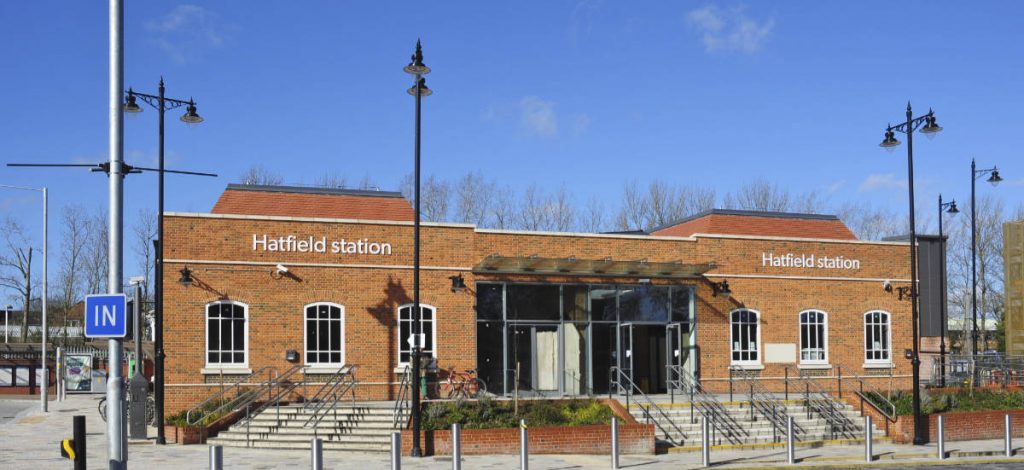
Image: Peter Moulton/Shutterstock.com
This is the part of the article where we give you the worst imaginable directions and you try not to lose yourself. Good luck.
By Road
Hatfield is easy by road. Straight up the A1 from London.
By Rail
Hatfield (Herts) train station is part of the Great Southern Line.
By Air
The nearest airport to Hatfield is London Luton airport.
By Sea
We’re afraid you are landlocked.
Got Five More Minutes?
Still stuck for something interesting to read on your lunch break. We are always delighted to help. Read our other local travel guides or visit us on Facebook to stay abreast of our news, gossip, and local travel guides.
[i] https://dottietales.wordpress.com/2016/03/30/hatfield-before-hatfield-house-1/
